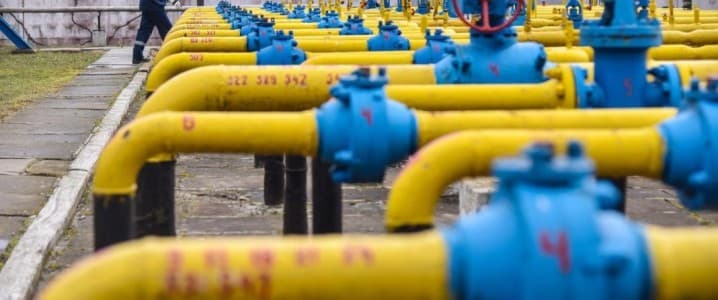In a contentiously pivotal move toward energy independence, Ukraine on Wednesday confirmed the launch of natural gas imports via the Trans-Balkan pipeline, bypassing Russian supply and allowing Ukraine to draw gas from European sources, including liquefied natural gas (LNG) imported through Greece and Azerbaijani gas from the Trans Adriatic Pipeline.
The Trans-Balkan pipeline, which historically carried Russian gas southward, has now been reversed to bring non-Russian gas northward into Ukraine.

Source: TSOUA
A Ukrainian energy ministry source told Reuters that the corridor will enable the import of up to 1 billion cubic meters (bcm) of gas by October, with June volumes expected to reach 100 million cubic meters.
Ukraine ceased transiting Russian gas to Europe at the end of 2024, choosing not to renew a longstanding agreement with Gazprom. Kyiv has emphasized that no Russian-origin gas will be involved in this newly activated corridor.
The European Commission has endorsed efforts like this under its broader REPowerEU strategy to end the bloc’s dependence on Russian fossil fuels.
Industry reports, including recent coverage from Argus Media and Pipeline & Gas Journal, note that monthly capacity auctions on the Trans-Balkan route have been successfully launched, off the market indications that there is, indeed, commercial interest and operational readiness.
The corridor’s activation is both a geopolitical and infrastructure achievement, reinforcing Ukraine’s energy sovereignty amid war and instability.
Following the cessation of gas transit through Ukraine, Russia has increased its gas exports to Europe via the TurkStream pipeline. In May 2025, Russian pipeline gas exports to Europe rose by 10% compared to April, averaging 46 million cubic meters per day.
The launch of the Trans-Balkan route is the result of coordinated action among five national gas transmission operators—from Greece, Bulgaria, Romania, Moldova, and Ukraine. The route enables natural gas to flow northward from Greece’s Revithoussa LNG terminal through southeastern Europe into Ukraine, completely bypassing Russian supply channels. With an annual capacity of up to 1 billion cubic meters, the corridor is supported by preferential tariffs—25% lower than standard rates, and 46% lower for deliveries into Ukraine.
According to the Kyiv Post, the joint initiative not only enhances Ukraine’s access to diversified energy sources but also strengthens regional energy security and resilience heading into the 2025–26 winter heating season.
By Charles Kennedy for Oilprice.com
More Top Reads From Oilprice.com

